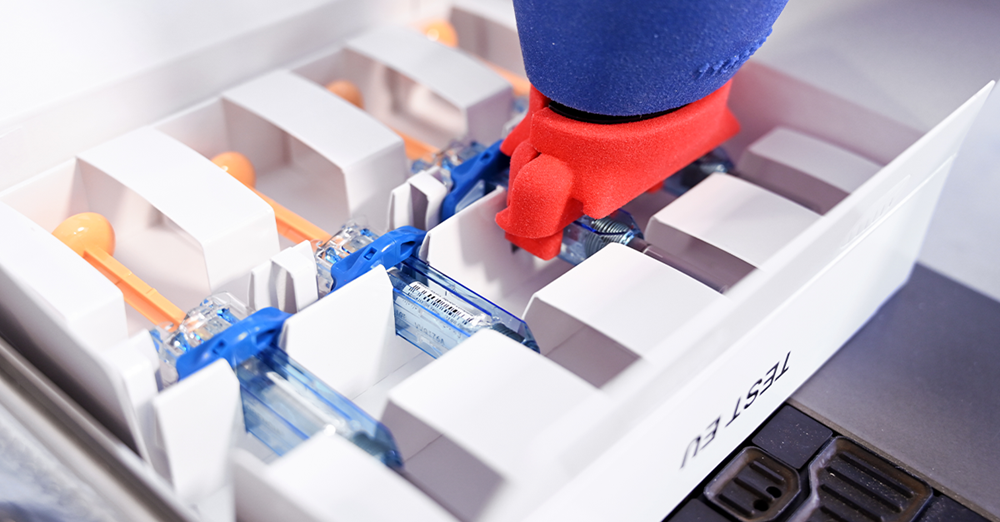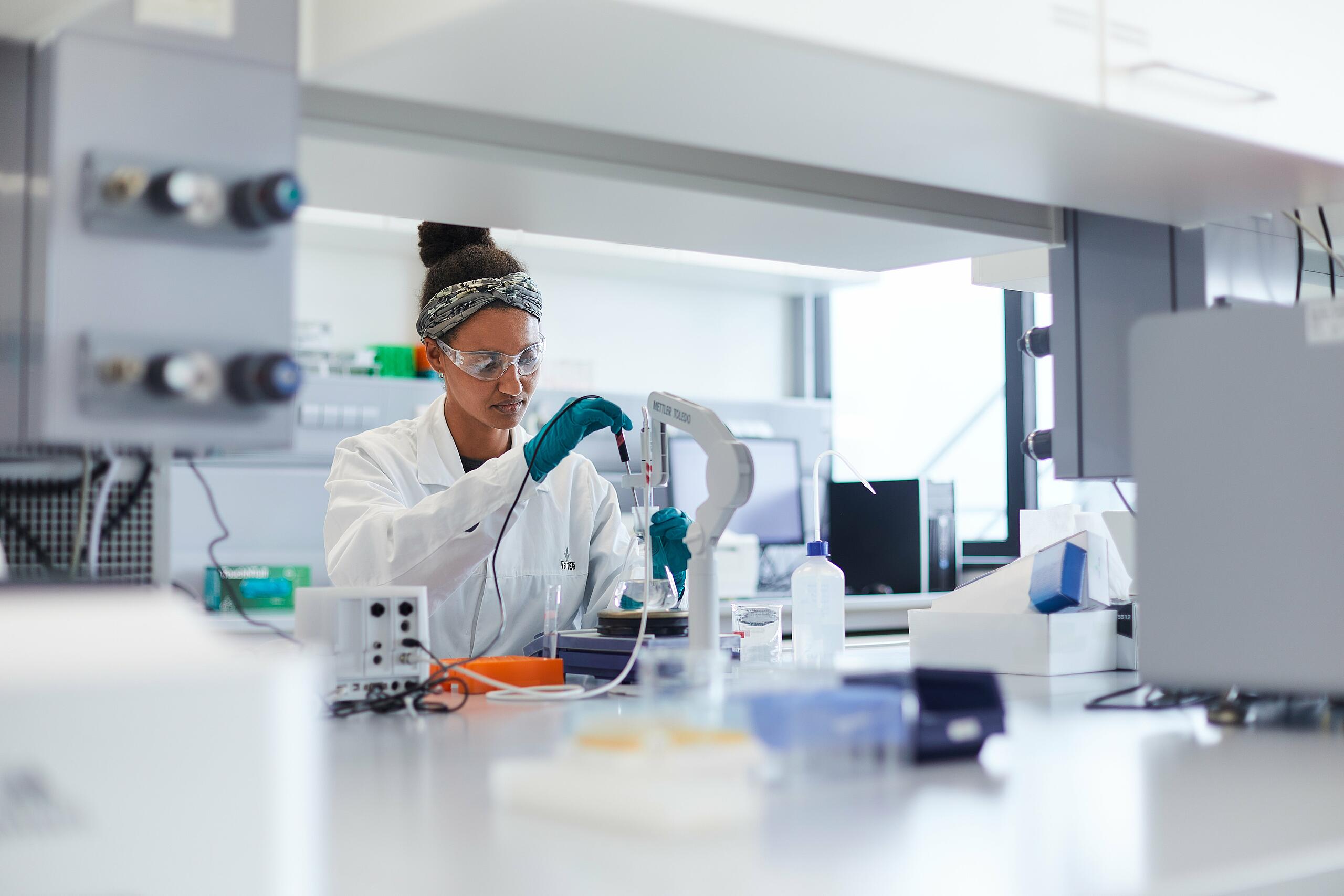
In his book The 7 Habits of Highly Effective People, Dr. Steven R. Covey offers some simple but powerful advice for anyone beginning a new endeavor: “Start with the end in mind.”
To set yourself up for success, Dr. Covey recommends, start every day, task, or project with a clear vision of the destination you want to reach and the results you want to achieve – and then work proactively to reach those goals.
This is smart advice for any biopharmaceutical company bringing a new product to market, also when it comes to secondary packaging strategy. Most pharmaceutical and biotechnology companies with a product in Phase III clinical trials are focused on scaling up their manufacturing capacity for launch.
But while these companies typically have clear commercial goals for the product itself, many pursue their launch strategy without a clear “end in mind” for their device assembly and secondary packaging. Product teams hyper-focused on commercialization often give this important product feature far less attention than it deserves. Downstream, this can have serious implications for a product’s processability, presentation, cost, and time-to-market.
As one of the world’s leading Contract Development Manufacturing Organizations (CDMO), our Vetter team has addressed this challenge with many of our global biopharmaceutical customers. We know how important it is to start with a clear end in mind for secondary packaging – and how starting early can save our customers both time and money.
Here are five key considerations we share with companies who are deciding where and when to make key decisions about their secondary packaging strategy.
Start with primary packaging
Your product’s primary packaging is one of the most important drivers of any downstream decisions about secondary packaging. That’s why primary packaging discussions are often the best time to begin developing your secondary packaging strategy.
Take a product packaged in a syringe with an autoinjector, for example. The format and the dimensions of the syringe and its barrel flange must fit the requirements of the whole injection system. Furthermore, the syringe itself will need to be designed to resist higher mechanical forces necessary during manufacturing.
The injection system will typically be produced on an existing manufacturing platform customized for your product and this customization will require usability studies. The required assembly machines will need to be optimized to process the combination format of your product’s specific components.
Factoring in the time needed to perform this level of adaptation and customization will help determine realistic downstream development timeline – for both your primary and secondary packaging.
Consider your product’s users and use cases
Your product’s specific users, use context, and route of administration can all have an impact on your secondary packaging needs. Factoring these parameters into your secondary packaging strategy is an essential step toward reaching the best possible solution for your product.
Syringes, for example, can be optimized for widely varying use cases. Ophthalmic syringes are designed for professional administration of intra-ocular injections that require fine motor skills. An injectable product indicated for at-home administration of an arthritis therapy will require a very different syringe configuration. The age and educational level of your target users are also important variables to consider when planning the administration of your product.
Factoring in different countries’ and markets’ demands can also help you make smart upstream decisions about your secondary packaging. For instance, multi-country/market labels and booklets take time to produce and vet internally. Allowing extra time for these steps can help you keep your strategy on track.
The reimbursement landscape in your product’s target market(s) is also an important factor to consider when planning your secondary packaging. Health insurance companies may prefer a cost-saving autoinjector that patients can administer at home, while physicians may prefer a vial kit that requires more costly in-clinic administration but allows for closer patient monitoring.

Launching in a Delivery Device
Learn about 5 important factors for your team to consider when planning a product’s transition to a delivery system.
Plan for market-level regulatory challenges
With more sophisticated solutions like autoinjectors, many markets may mandate additional validation and documentation that can increase your product’s time-to-market. Companies often plan to simultaneously launch a product e.g. in both a syringe and autoinjector. Without factoring in their markets’ varying regulatory requirements, these companies are often forced to stagger the launch of their different product variants – with the more sophisticated autoinjector facing delays.
Many regional markets will also have their own specific requirements – such as additional labelling and mandatory variable data – that can shift your approach to product packaging and manufacturing. These extra requirements don’t simply take up extra labelling space: They often create a need for country-specific packaging variants.
Once regulatory needs are taken into account, large product filling batches melt down into much smaller country-by-country production orders with their own customized secondary packaging. Proactively building these variations into your secondary packaging and supply chain strategy can help keep your product on the fastest path to market.
Don’t miss the chance to differentiate your product
Your secondary packaging gives you a big opportunity to sharpen your product’s competitive edge. That’s because your secondary packaging is an important place to solve for the specific needs of your target users: for instance, ophthalmic syringes optimized for precision professional control and easy-open packaging for patients with reduced dexterity.
User-centric design factors like these can result in a significant boost in your product’s market value. More convenient and functional packaging helps enhance user safety by reducing the chance for administration errors, while making your product easier to open and use supports greater patient compliance.
Enhanced functionality and convenience are also goals you can pursue in stages. If speed-to-market is crucial, you may not have time to develop your product to its full commercial potential in its very first presentation. In that case, consider building further development into a lifecycle strategy that continually enhances your product’s value over time.
Have a partner who’s ready for commercial scale-up
Your secondary packaging needs and order sizes will grow rapidly during the critical transition from clinical to commercial production. Having the right strategic partnerships in place is especially important during this period.
Whether you rely on an in-house production unit or a CDMO, you’ll need a production and manufacturing team with the experience and flexibility to manage the shift from small-scale clinical production to large-scale commercial manufacturing – while maintaining stringent quality standards at every step.
In our global experience, some resources and capabilities like these can be vital during clinical-to-commercial ramp-up. Such resources and capabilities include scalable production setup with high-grade automation that can manage significant changes in a product’s demand while securing quality, a supply chain capable of reliably delivering consistent quality materials at any quantity, In-house engineering and tooling skills for when existing equipment needs to be adjusted or errors need to be addressed and mitigated, and proven success in qualifying and establishing solid processes
These are some of the critical skill sets needed to ensure dependable security of supply for your product. Look for these qualities in your production and manufacturing team as early as possible in the process of scaling up to commercial production.
Future trends to consider
Several important factors are driving global shifts in the pharmaceutical and biotech markets, and the demand for biopharmaceutical products.
Foremost halth authorities’ demand for commercial products is growing rapidly around the world and the FDA is continuing its emphasis on real-world evidence of product efficacy, while the EMA is increasing its demands for post-market surveillance to monitor product safety.
Also, in reimbursement markets, payers and pharmacy benefit managers are demanding verification of intended product benefits and patient compliance, while pay-for-performance models are becoming more popular in certain markets, especially for expensive treatments.
Across all these trends, new data solutions are providing medical professionals, biopharma companies, and payers with exciting new opportunities to deepen their understanding of disease and patient behavior. Digital technologies like smart labels and connected devices are playing a growing role in driving this trend.
The issue of sustainability has also become a global megatrend, one that quickly is gaining traction in the biopharmaceutical industry. Many large companies in this sector have discovered that this topic is an excellent fit for their Corporate Social Responsibility (CSR) strategies. Novartis, for example, has pledged to be “completely plastic neutral, with all new products meeting sustainable design principles*” by 2030.
Published by korebiomed.com

